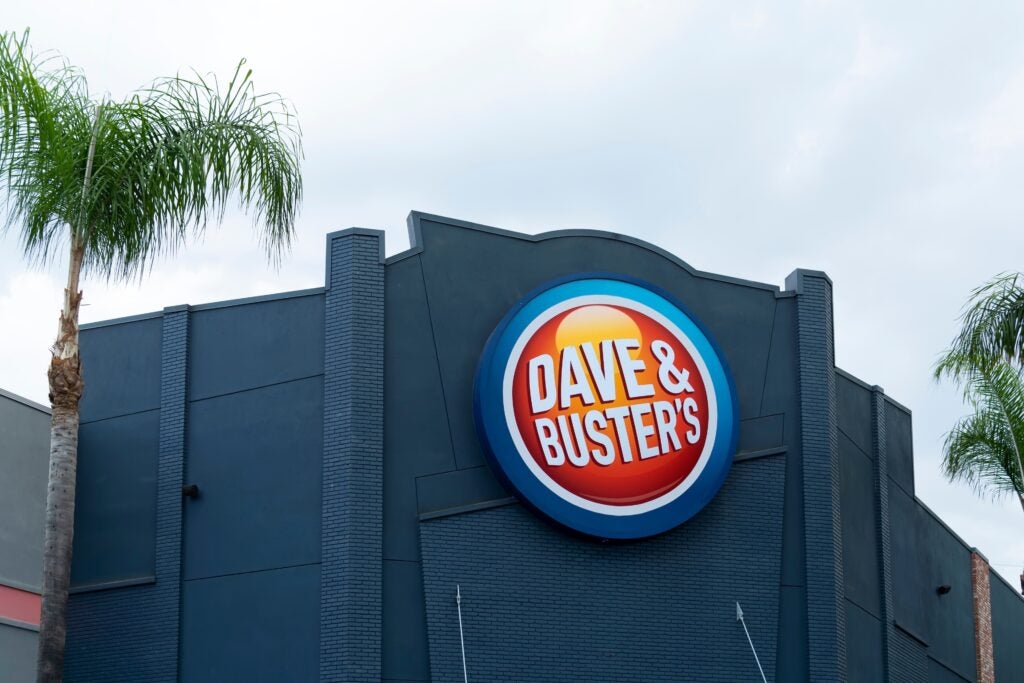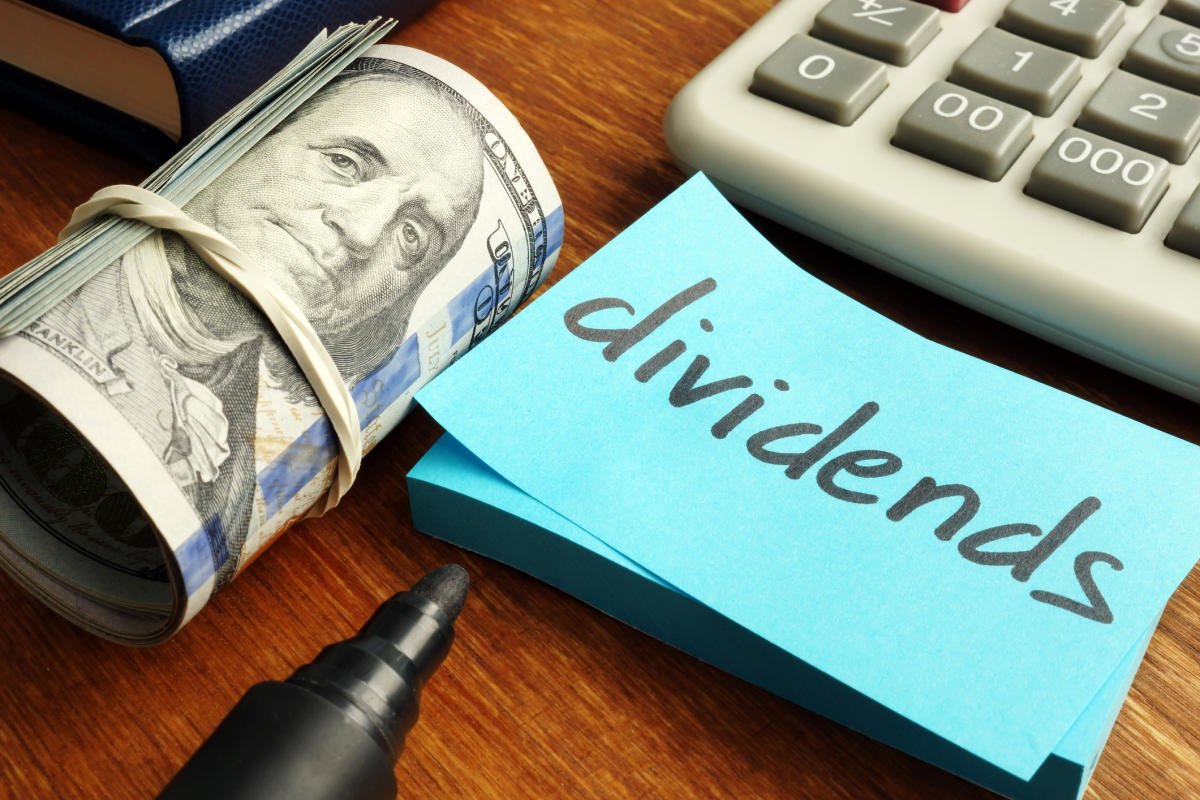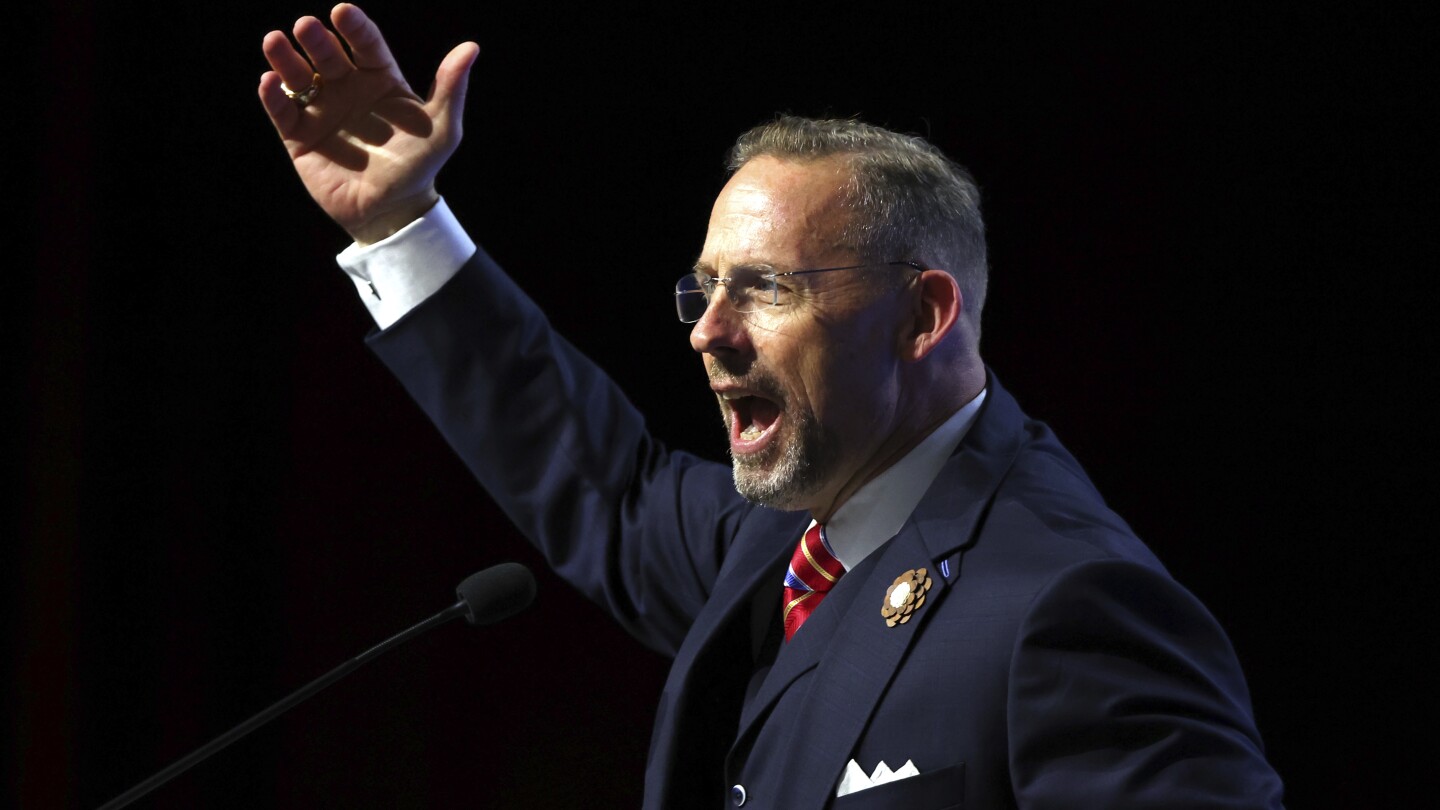Stocks surged in late trading Wednesday, recovering from steep early-session losses that followed a government report showing a contraction in the U.S. economy, as investors awaited earnings releases from several major technology companies.
The Dow Jones Industrial Average and S&P 500 rose 0.4% and 0.2%, respectively, extending their winning streaks to seven consecutive sessions, while the tech-heavy Nasdaq Composite closed 0.1% lower. Stocks have rallied over the past week as investors have digested corporate results that have been generally strong and welcomed signs that the Trump administration could soften its stance on tariffs, though concerns about the health of the economy linger.
Despite the rally, the Dow and S&P 500 posted losses in April of 3.2% and 0.8%, respectively, marking the third consecutive month of losses for the indexes. The Nasdaq managed to eke out a 0.9% gain in April, snapping its two-month losing run.
GDP data released this morning showed that the U.S. economy shrank for the first time in three years in the first quarter, heightening concerns about the possibility of a recession, while private payrolls numbers from ADP were weaker than anticipated. The Federal Reserve’s preferred measure of inflation, also released this morning, was in line with economists’ expectations. Market participants are watching economic indicators closely as they assess the impact of Trump administration policies and try to ascertain how the data could affect the Fed’s decision-making on interest rates.
Several companies that reported earnings late yesterday or early this morning made big moves on Wednesday.
Starbucks (SBUX) shares fell nearly 6% after the coffee chain’s results missed on the top and bottom lines, while Super Micro Computer (SMCI) plunged 12% to lead S&P 500 decliners after the server maker issued preliminary results that came in well below the company’s previous guidance. GE HealthCare Technologies (GEHC) climbed more than 3% after posting better-than-expected results,
Shares of the world’s largest technology companies finished the session mixed, as investors awaited scheduled earnings releases from Microsoft (MSFT) and Meta Platforms (META) after today’s close and reports from Apple (AAPL) and Amazon (AMZN) late tomorrow.
Tesla (TSLA) shares fell more than 3%, while Nvidia (NVDA), Alphabet (GOOG), Amazon and Meta also lost ground. Apple Microsoft and Broadcom (AVGO) rose slightly. (Meta and Microsoft were gaining ground in after-hours trading following the release of better-than-expected quarterly results.)
Shares of major oil companies also slid—Exxon Mobil (XOM) and Chevron (CVX) were each down more than 2%—as crude oil prices tumbled. West Texas Intermediate futures, the U.S. crude oil benchmark, slipped 3.7% to around $58.20 per barrel, near their lowest level in four years.
Gold futures—which hit a record high early last week of around $3,500 an ounce as investors turned to the traditional safe haven amid concerns about tariffs—were down 1.1% at $3,2950.
The yield on the 10-year Treasury note, which affects borrowing costs on all sorts of consumer and business loans, was holding steady from yesterday’s close at 4.17%, trading near its lowest levels since early this month. The U.S. dollar index, which measures the performance of the dollar against a basket of foreign currencies, was up 0.4% at 99.70, after hitting a three-year low below 98 early last week.
Bitcoin was at $94,600 recently, up from an intraday low of around $93,000.
Meta Surges in Extended Trading as Results Top Estimates
10 minutes ago
Meta (META) shares jumped in extended trading after the tech giant reported better-than-expected quarterly earnings.
The Facebook, Instagram, and WhatsApp parent reported first-quarter revenue of $42.31 billion, up 16% year-over-year and above the analyst consensus from Visible Alpha. Net income of $16.64 billion, or $6.43 per share, compared to $12.37 billion, or $4.71 per share, a year earlier, also topping projections. Advertising revenue, which makes up the bulk of Meta’s revenue, climbed 16% to $41.39 billion, surpassing Street estimates.
“We’ve had a strong start to an important year, our community continues to grow and our business is performing very well,” said CEO Mark Zuckerberg, adding, “we’re making good progress on AI glasses and Meta AI, which now has almost 1 billion monthly actives.”
Meta shares rose over 5% in after-hours trading. The stock was down 6% for the year so far through Wednesday’s close.
Looking ahead, the company said it anticipates second-quarter revenue between $42.5 billion and $45.5 billion. Analysts were looking for $44.13 billion.
Microsoft Jumps in Extended Trading After Strong Earnings
26 minutes ago
Microsoft (MSFT) reported fiscal third-quarter revenue and profits that surpassed analysts’ expectations, sending shares higher in extended trading Wednesday.
The tech titan’s revenue grew 13% year-over-year to $70.07 billion, above the analysts’ consensus from Visible Alpha. Net income of $25.82 billion, or $3.46 per share, rose from $21.94 billion, or $2.94 per share, a year earlier, topping Wall Street’s estimates.
The gains came as revenue from Microsoft’s Intelligent Cloud segment, which includes its Azure cloud computing platform, rose 21% to $26.75 billion, above expectations.
“Cloud and AI are the essential inputs for every business to expand output, reduce costs, and accelerate growth,” CEO Satya Nadella said. “From AI [infrastructure] and platforms to apps, we are innovating across the stack to deliver for our customers.” Earlier this year, Microsoft said it plans to spend $80 billion on infrastructure in fiscal 2025.
Microsoft shares were up 6% in recent after-hours trading. The stock was down 6% for the year so far through Wednesday’s close.
Starbucks Levels to Watch After ‘Disappointing’ Earnings
1 hr 25 min ago
Starbucks (SBUX) shares tumbled on Wednesday after the coffee chain posted fiscal second-quarter results that fell short of analysts’ expectations.
The company said that global same store sales fell 1% in the quarter, a bigger drop than Wall Street anticipated. CEO Brian Niccol, who assumed the role last September and has launched a major turnaround effort, characterized the results as “disappointing” in a conference call late Tuesday.
In addition to managing strategic changes, the coffee giant faces external challenges such softening consumer spending and a potential rise in the price of coffee beans amid uncertainty surrounding sweeping tariffs imposed by the Trump administration.
Starbucks shares were down nearly 7% at around $79 in afternoon trading, after dropping as low as $75.50 early in the session. The stock is down about 13% since the start of the year, and has lost a third of its value since hitting a 52-week high in early March.
After falling decisively below the 200-day moving average (MA) earlier this month, Starbucks shares consolidated within a symmetrical triangle to signal indecision among market participants ahead of the company’s quarterly earnings. However, the stock broke down below the pattern’s bottom trendline early Wednesday, setting the stage for a potential continuation move lower.
It’s also worth noting that the 50-day MA has converged toward the 200-day MA throughout April to signal a looming death cross—a bearish chart pattern that indicates lower prices ahead.
Investors should watch major support levels on Starbucks’ chart around $77 and $72, while also monitoring important overhead areas near $91 and $99.
Read the full technical analysis piece here.
Will Booking Withstand Worries About Travel Demand?
1 hr 49 min ago
Booking Holdings (BKNG) widened its full-year outlook amid concerns about the U.S. travel industry, but analysts say the company’s international operations should help counter a decline in U.S. travel bookings.
Booking on Tuesday reported better-than-expected earnings, but widened the lower ends of its projected ranges for full-year revenue and gross bookings, saying its business “could be impacted by the increased uncertainty in the geopolitical and macroeconomic environment.” The company now expects both measures to grow by mid- to high-single digits, compared to just high-single digits previously.
The company has seen a “moderation in trends for inbound travel into the U.S.” so far this year, particularly from Canada, CFO Ewout Steenbergen said, according to a transcript provided by AlphaSense.
U.S. travelers have also decreased their length of stays, and the CFO said Booking has seen “some evidence of a bifurcated economy in the U.S.” as demand for hotels with higher star ratings have seen demand stay more stable than their lower-star counterparts.
Analysts from JPMorgan and UBS lifted their price targets to $5,360 and $5,750, respectively, following the report. The JPMorgan analysts said that Booking’s operations across the globe should help the company offset any weakness in U.S. travel activity.
UBS analysts also suggested Booking could be able to continue growing revenue and profits even if hotel room bookings slow, as the company pushes further into offering booking options for “alternative accommodations, flights, ground transportation, and attractions.”
Jefferies analysts were more cautious, with a “hold” rating and $5,000 price target. They wrote Wednesday that they are keeping their “hold” rating on concerns “macro uncertainty could limit medium-term growth and stock upside.”
Booking shares were up 2% at $5,008 in late trading Wednesday. They’ve added about 45% in the past 12 months but are flat since the beginning of 2025.
Stellantis Suspends Outlook on ‘Tariff-Related Uncertainties’
2 hr 56 min ago
Stellantis (STLA) said Wednesday it is suspending its full-year outlook, pointing to “tariff-related uncertainties.”
The “Big Three” automaker, which is home to such brands as Jeep and Chrysler, is the latest to withdraw its full-year projections as President Donald Trump’s tariffs weigh on the industry. On Tuesday, General Motors (GM) shelved its prior 2025 guidance because it did “not contemplate the potential impact of tariffs,” and postponed updating it amid uncertainty about auto duties.
The pulled guidance comes as the automakers face a 25% levy on imported vehicles, although they got some relief Tuesday when the Trump administration softened some of the auto tariffs, saying that while the duty remains, foreign vehicles won’t face other levies such as a 25% tax on steel and aluminum imports.
Stellantis said it is working with governments on the tariff policies while acting “to reduce impacts.” The company said it is also “taking action to adjust production plans, and identifying opportunities for improved sourcing.”
Stellantis said its first-quarter revenue fell 14% year–over-year to 35.8 billion euros ($40.7 billion) on “lower shipment volumes, as well as unfavorable mix and pricing.” As predicted in preliminary Q1 estimates earlier this month, shipments fell 9% to 1.22 million units because of decreased North American production due to “extended holiday downtime in January.”
TradingView
Shares of Stellantis were down nearly 4% in recent trading and have lost about 30% of their value since the start of 2025.
Does the GDP Decline Indicate a Recession?
3 hr 28 min ago
The U.S. economy contracted in the first quarter, raising the question: Are we in a recession?
Economic growth, as measured by the Gross Domestic Product, has to be negative for more than one quarter for a recession, according to the National Bureau of Economic Research, the nonprofit research group that officially calls recessions. According to the NBER: “A recession involves a significant decline in economic activity that is spread across the economy and lasts more than a few months.”
The NBER has not yet declared a recession. The current downturn also hasn’t met an unofficial definition of recession, which is two consecutive quarters of negative growth. However, economists’ comments on Wednesday’s GDP figures were full of speculation about a possible recession ahead.
Wednesday’s report was a stark contrast to the beginning of the year, when the economy grew steadily with no end to the expansion in sight. Since then, President Donald Trump’s tariffs have shaken up financial markets, squashed consumer confidence, and raised the possibility of a serious economic downturn ahead.
While the NBER hasn’t declared a recession, it doesn’t necessarily mean we aren’t at the beginning of one. The bureau only calls recessions months after the fact, when backward-looking data indicates one has begun.
Some economists see a recession in the tea leaves because Trump’s tariffs have disrupted business. Because the rollout of the trade policy has been so unpredictable, many businesses have become reluctant to invest and hire new employees.
“The numbers increasingly suggest a recession may have begun,” David Russell, global head of market strategy at TradeStation, wrote in a commentary.
On the other hand, some essential parts of the economy have stayed resilient, including the main engine of the economy, consumer spending, which surged in March.
“The consumer is too strong to speculate the economy has dipped into recession,” Jeffrey Roach, chief economist for LPL Financial, wrote in a commentary.
Still, experts believe recession risks have grown even if it’s not a certainty. In recent months, forecasters have raised the chances of the U.S. entering a recession in the coming year. Friday’s highly anticipated report on the job market could shed light on how resilient the economy is to the tariff shock.
GE HealthCare Tops Estimates but Cuts Outlook Over Tariffs
5 hr 3 min ago
GE HealthCare Technologies (GEHC) on Wednesday posted first-quarter results that came in better than analysts had expected, but the former General Electric division lowered its full-year profit outlook because of tariffs.
The medical device maker reported adjusted earnings per share of $1.01 on revenue that increased 3% year-over-year to $4.78 billion. Analysts polled by Visible Alpha had forecast $0.92 and $4.66 billion, respectively.
However, GE HealthCare lowered its full-year adjusted EPS forecast because of announced tariffs, which it said will have an impact of $0.85 per share. The company said it now expects adjusted EPS of $3.90 to $4.10, down from the prior range of $4.61 to $4.75. It still expects organic revenue growth of 2% to 3%.
“Regarding the current global trade environment, we are actively driving mitigation actions,” CEO Peter Arduini said. “We continue to see strong customer demand in many of the markets we serve and are well-positioned to drive long-term value as we invest in future innovation.”
Also on Wednesday, the company said its board has approved a stock buyback plan of up to $1 billion.
TradingView
GE HealthCare shares were up more than 4% in early-afternoon trading Wednesday, narrowing the stock’s year-to-date decline to about 9%.
Last week, the firm’s former corporate brethren GE Vernova (GEV) and GE Aerospace (GE) topped Q1 estimates and affirmed their full-year outlooks.
Starbucks Stock Drops as Latest Results Disappoint
5 hr 52 min ago
Shares of Starbucks (SBUX) dropped Wednesday, sliding after the coffee giant’s latest results disappointed and its new CFO declined to offer an outlook for the months to come.
Starbucks stock was down more than 7% in recent, a move that has the shares off roughly 14% this year. The company last night reported fiscal second-quarter financial results that were below Wall Street’s expectations—and were “disappointing,” according to comments on a Tuesday evening conference call last night from CEO Brian Niccol, who joined from Chipotle last year.
The company, which is busy with a wide-ranging turnaround effort, named Cathy Smith its CFO earlier this year; Smith on the call said she was ”still learning the business, and it would be premature for me to provide such insight,” according to a transcript made available by AlphaSense.
“While our financial results are far from Starbucks’ potential, I am confident we have the right strategy,” Smith said.
Wall Street analysts are somewhat lukewarm on the company’s shares these days. Visible Alpha’s consensus price target a bit below $92 is an 8% premium to Tuesday’s close, but that would still be below the stock’s 52-week high a few bucks under $120, seen earlier this year—and closer to 52-week lows above $70.
“We acknowledge visibility into near-term numbers is low,” wrote Deutsche Bank analysts, whose $97 price target is a bit higher than the average. “We believe Starbucks is making the right investments for the business long term, supporting our high conviction in the success of the turnaround.”
Snap Plunges as Company Pulls Guidance Amid ‘Uncertainty’
6 hr 59 min ago
Shares of Snap (SNAP) tumbled Wednesday, a day after the social media company said it wouldn’t provide a current-quarter outlook and plans to cut costs because of “uncertainty” about the future.
The Snapchat operator wrote in a letter to investors that because it’s not clear “how macro economic conditions may evolve in the months ahead, and how this may impact advertising demand more broadly, we do not intend to share formal financial guidance for Q2.”
The company said that even though revenue continued to increase, “we have experienced headwinds to start the current quarter, and we believe it is prudent to continue to balance our level of investment with realized revenue growth.”
As a result, Snap is reducing its expectation for full-year adjusted operating expenses to $2.65 billion to $2.70 billion from its previous estimate of $2.70 billion to $2.75 billion. It also sees its 2025 stock compensation at $1.13 billion to $1.16 billion, down from the previous forecast of $1.15 billion to $1.20 billion.
The warning offset better-than-anticipated first-quarter results. The company reported a net loss of $0.08 per share on revenue that rose 14% year-over-year to $1.36 billion. Analysts surveyed by Visible Alpha were looking for a loss of $0.14 per share and revenue of $1.35 billion.
CEO Evan Spiegel noted Snap surpassed 900 million monthly active users (MAU) for the first time, and that the revenue jump was driven by “the progress we have made with our direct-response advertising solutions, continued momentum in driving performance for small and medium sized businesses, and the growth of our Snapchat+ subscription business.”
TradingView
Snap shares were down 17% recently, pushing the stock’s year-to-date decline to 30%.
Norwegian Cruise Stock Sinks as Results Miss Estimates
7 hr 36 min ago
Norwegian Cruise Line Holdings (NCLH) shares plunged Wednesday, after the company posted earnings that missed analysts’ estimates and said it had seen some “softening” in bookings amid economic uncertainty.
The Miami-based cruise operator posted first-quarter adjusted earnings per share (EPS) of $0.07 on revenue that fell 3% year-over-year to $2.13 billion. Analysts polled by Visible Alpha had projected $0.09 and $2.15 billion, respectively.
“The Company has seen softening in its 12-month forward booked position but continues to remain within the optimal range, even amid ongoing macroeconomic volatility,” Norwegian Cruise said.
The cruise line maintained its outlook for 2025, anticipating adjusted EPS of $2.05, increasing about 13% year-over-year.
“While we recognize there may be potential pressures on the top line, we believe these can be effectively offset by the continued execution of our cost savings initiatives,” CEO Harry Sommer said.
Norwegian Cruise shares, which had lost about a third of their value since the start of the year through Tuesday’s close, were down 10% in early trading.
Supermicro Levels to Watch as Stock Sinks After Results
8 hr 23 min ago
Super Micro Computer (SMCI) shares plummeted in premarket trading after the server maker posted preliminary results for its fiscal third quarter that came in well below its prior guidance.
The company tied the downward revision to delayed consumer product decisions that pushed sales into the current quarter, amplifying broader concerns of a slowdown in spending amid uncertainty over the Trump administration’s sweeping tariffs.
Coming into today’s session, Supermicro shares had gained 18% so far this year. The stock has, however, seen significant price swings as investors assess recent challenges relating to the company’s accounting and corporate governance practices amid a clouded demand outlook for AI infrastructure, such as servers used in data centers.
Supermicro shares have oscillated within an ascending channel since October last year, tagging the pattern’s upper and lower trendlines on several occasion over that time. More recently, the stock has rallied from the channel’s lower trendline, though the price has remained below the respected 50- and 200-day moving averages to indicate a longer-term downtrend.
Investors should monitor support levels on Supermicro’s chart around $28 and $17, while also watching resistance levels near $50 and $63.
The stock was down 20% at around $29 ahead of the opening bell.
Read the full technical analysis piece here.
S&P 500, Nasdaq Futures Lower After 6 Days of Gains
9 hr 11 min ago
Futures tied to the Dow Jones Industrial Average were up 0.1%.
TradingView
S&P 500 futures were down 0.4%.
TradingView
Nasdaq 100 futures slipped 0.6%.
TradingView















